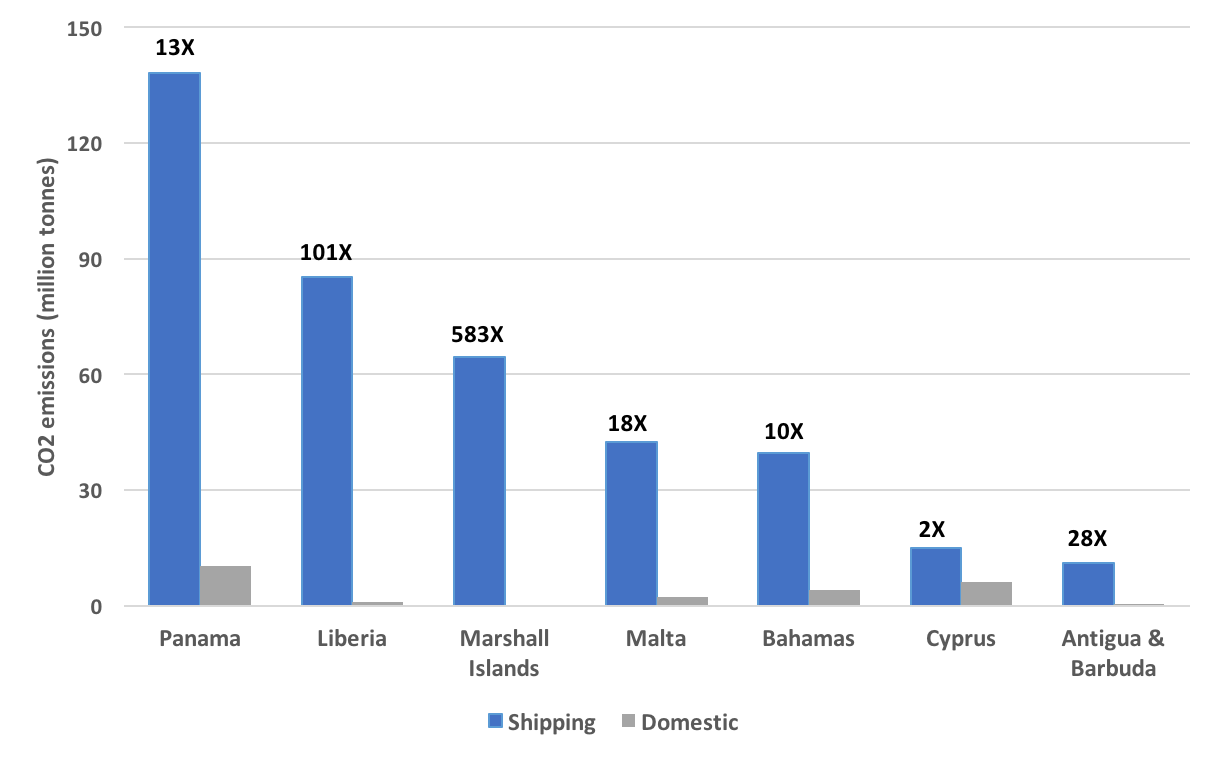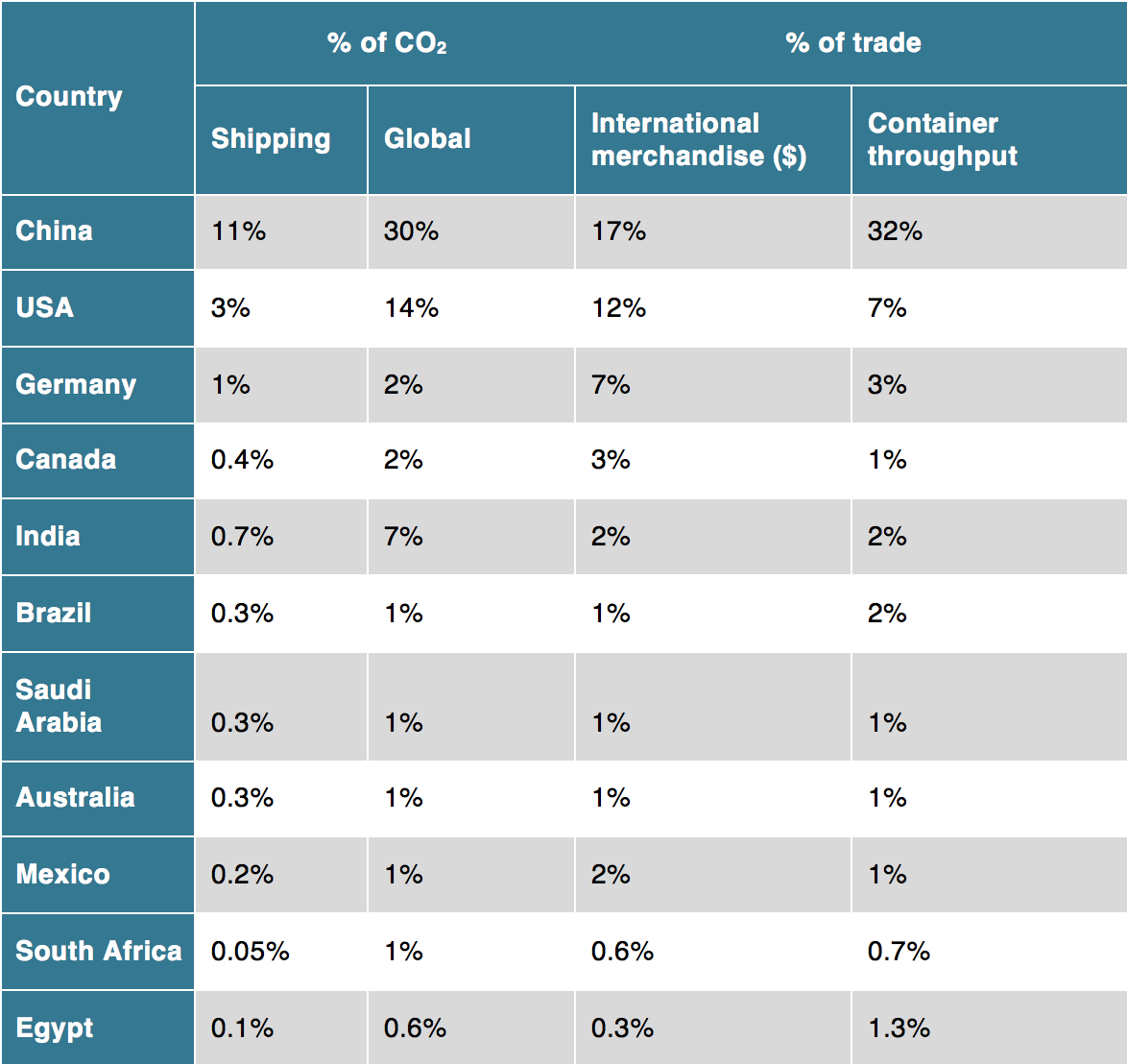If you’re old enough to remember analog arcade games you might remember the game Whac-A-Mole. It’s the fun, but sometimes frustrating game where the player uses a soft mallet to hit moles that duck in and out of holes on the machine. Try to hit a mole in one place, miss and see it pop up elsewhere. Unfortunately, this is what trying to control greenhouse gases (GHGs) from shipping feels like sometimes.
This recent ICCT report sheds new light on global shipping emissions from 2013 to 2015, including which flag states contribute the most to the problem. Ships registered to six flag states – Panama, China, Liberia, Marshall Islands, Singapore, and Malta – were responsible for more than half of carbon dioxide (CO2) emissions from shipping over that period. In contrast, according to UNCTAD those countries accounted for only 19% of international merchandise trade and 39% of container throughput. Excluding the shipping and manufacturing giant China (and Hong Kong), the remaining five flag states together account for 2% of world trade value and 7% of container throughput, but more than 40% of shipping emissions. What drives this disparity, and why is it important?
This disconnect between where ships are registered and shipping CO2 emitted is due in part to open registries, which allow a merchant ship to register far from where it is owned and operated. Open registries provide shipping companies the flexibility to choose where to domicile their ships, and have been criticized by some as leading to “flags of convenience,” whereby ship owners can evade various regulations, including environmental standards, by registering their ships to more lenient countries. On the flip side, the practice can generate valuable revenue for smaller, less developed countries, even if a surprising amount of that money ends up in the hands of private companies in Virginia.
It’s possible to define a flag state in climate terms. The simple approach we take is to compare each country’s shipping emissions to three other indicators of its role in the global economy: its domestic CO2 emissions, its share of international merchandise trade, and its share of global container throughput. Start with emissions. The chart below shows the most important states where shipping emissions dramatically outweigh domestic emissions.
For these major flag states, shipping CO2 ranges from twice domestic emissions (Cyprus) to a remarkable six hundred times domestic emissions (Marshall Islands). Overall, our study found that global shipping was responsible for 2.6% of global CO2 emissions in 2015. This means that the major flag states in the chart are contributing between 80 and 2400 times as much marine CO2 per capita than the global average!
The emissions are coming from somewhere, though. Fundamentally, this is driven by major economies offshoring emissions to smaller, poorer states with large ship registries. Which countries are driving the outsourcing of maritime emissions? That is, which countries have a much lower share of shipping emissions in comparison to their share of global CO2 and international trade? The table below identifies some of the culprits.
For these nations, their relative share of overall CO2 and trade (either economic value of merchandise or container throughput) is typically 2 to 5 times their contribution to shipping CO2 in percentage terms. In absolute (million tonnes of CO2, or USD) terms, China and the U.S. are the most outsourced, while in relative terms India, South Africa, and Egypt show the largest gap between their percentage share of world trade and shipping emissions.
So what does this all mean, and how does it relate to moles in holes? For flag states, the fear of losing customers via an exodus of ships from their registries typically weakens their support for tougher maritime regulation and enforcement. It also makes enforcement of local and regional requirements more onerous by introducing a layer of bureaucracy between the port states directly impacted by emissions and the ship owner and operator. Open registries also complicate discussions about who should take the lead in reducing shipping emissions — as summarized the imposing acronym CBDR&RC, which stands for “Common but Differentiated Responsibilities and Respective Capabilities” — because those countries most directly interfacing with a ship owner are generally poorer states. This mole gets around.
So what to do? For better or for worse, part of the problem may be self-correcting. As more flag states are directly impacted by the tragic consequences of climate change, they may end up following the lead of the Marshall Islands, led by the late Tony de Brum, which has become an important champion of climate action at the International Maritime Organization (IMO). Beyond this, it will be important for IMO to devise policies that take into account the fact that the paper trail for shipping emissions doesn’t always align with the benefits of world trade. Accordingly, reasonable efforts should be made to avoid GHG measures that disproportionately impact poorer states that are heavily reliant upon maritime shipping.
The next chapter in this saga occurs next week, when countries, industry representatives, and non-governmental organizations will gather in London to discuss IMO’s comprehensive GHG strategy for ships. IMO’s strategy could include a cap on ship emissions. Seeing as how extreme weather events are ramping up in 2017, it should be clear to everyone now that we’re no longer playing a game.


